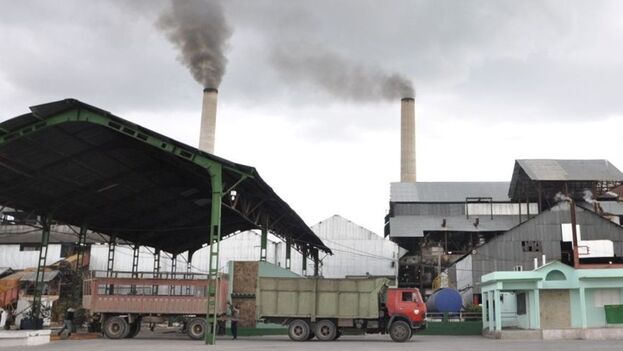
![]() 14ymedio, Mercedes García, Sancti Spíritus, 15 February 2023 — Jatibonico’s colossus no longer roars as it used to. Instead of the rattling of its machinery, the Uruguay sugar mill is silent and prepares for the arrival of its new managers, a Russian company that will try to revitalize what in its day was one of the greatest Cuban sugar mills. Meanwhile, the neighbors are questioning whether the town will experience a new economic opportunity with the change of industry administration.
14ymedio, Mercedes García, Sancti Spíritus, 15 February 2023 — Jatibonico’s colossus no longer roars as it used to. Instead of the rattling of its machinery, the Uruguay sugar mill is silent and prepares for the arrival of its new managers, a Russian company that will try to revitalize what in its day was one of the greatest Cuban sugar mills. Meanwhile, the neighbors are questioning whether the town will experience a new economic opportunity with the change of industry administration.
“This place is more dead than the cemetery,” Luis Manuel tells 14ymedio. He is one of the many employees who in the middle of last year lost his job due to the closure of the mill, because “technological obsolescence and lack of investment became, along with the shortage of cane, dangerous threats to the continuity of the industry,” according to the local press at the time.
“In that time the only thing that has happened here is that young people have gone to sea. The family that does not have a balsero [rafter] child is because they have two,” he says. “Now the Russians are preparing to repair the plant and start producing. They say that although they bring their own workers, there will always be some places for us.”
In October 2022, four months after this newspaper first recounted the closure of the Uruguay sugar mill, the news was confirmed by the official provincial newspaper Escambray. The article hinted that the hope for hundreds of workers who were unemployed was in Moscow, because a Russian entourage visited Jatibonico and expressed the intention to create a joint venture that would save the moribund mill town.
Of the 424 workers that the plant had at that time, 192 began to undertake repair work to make improvements, and 102 were inserted into another “eight labor groups with payment systems adjusted to activities that generate income for them and the company.” Those areas ranged from carpentry to painting, sheet metal work and preventing ice, all of them dependent on the plant.
Then, Eddy Gil Pérez, director of the Uruguay Agroindustrial Sugar Company, expressed enthusiasm with the possible Russian management: “We are among the nine sugar mills of the country chosen for these businesses,” he revealed. More than half a year later, this February, workers in the sector have been informed that the agreement has been finalized with Moscow, and the Uruguay mill should not be counted on for the current harvest because it is being remodeled.
“It all ended quickly,” admits Luis Manuel. “Those of us who were relocated, for example, in agriculture, ended up returning to our homes because there are not so many other crops in this area nor does the State pay what was promised.” After several months, the family of the former Uruguay mill employee survives thanks to an emigrated daughter and the sale of guava candy on the side of the road.
“The Russians are already here,” says an employee of the Zaza hotel, a nearby accommodation with an architectural style of the Soviet era and very similar to the so-called schools in the countryside. The place, which had been deteriorating for years, is now undergoing “capital repair,” says the woman. “The investment is great because this is made of wood, but you can see that the Russians come with resources and with their own people for repairs.”
“They arrived, signed the contract and are already working. They are staying here, and we are no longer accepting national customers,” says the accommodation worker belonging to the Islazul chain. “This place is not very nice but as it is set aside, it was cheap and close to the dam. People came here to spend a few days, but the word has already spread that we are not accepting Cuban guests.”
The idea is that the Zaza hotel will function as temporary accommodation for Russian technicians who will try to revitalize the Uruguay mill, operating since 1905, which has undergone endless transformations and repairs since its foundation. In recent years, stops due to breakdowns have multiplied, and the mill spent more months shut down for repair and maintenance work than grinding cane.
“This was the pride of our people and now it’s better not to mention it,” says María Elena, who worked at the beginning of the century in the administration of the mill, one of the largest sources of employment in the province historically. “We were like a family but all that was lost, and now no one tells us if with the Russians we are going to benefit from the Uruguay grinding again.”
Translated by Regina Anavy
____________
COLLABORATE WITH OUR WORK: The 14ymedio team is committed to practicing serious journalism that reflects Cuba’s reality in all its depth. Thank you for joining us on this long journey. We invite you to continue supporting us by becoming a member of 14ymedio now. Together we can continue transforming journalism in Cuba.
